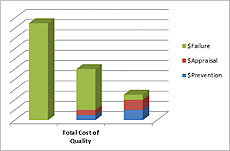|
Have a safe day!
Monday, Feb. 20
THERE WILL BE NO PARTICLE ASTROPHYSICS SEMINAR TODAY
3:30 p.m.
DIRECTOR'S COFFEE BREAK - 2nd Flr X-Over
4 p.m.
All Experimenters' Meeting - Curia II
Lifetime Studies of Cryogenic ICs for LAr TPC Readout; GPUs Use for Lattice and Other Calculations
Tuesday, Feb. 21
3:30 p.m.
DIRECTOR'S COFFEE BREAK - 2nd Flr X-Over
4 p.m.
Accelerator Physics and Technology Seminar - One West
Speaker: Timur Shaftan, Brookhaven National Laboratory
Title: Experiments with a Single Electron Circulating in a Storage Ring
Click here for NALCAL,
a weekly calendar with links to additional information.
Upcoming conferences
|
|
Monday, Feb. 20
- Breakfast: Croissant sandwich
- French Quarter gumbo soup
- French dip w/ horseradish cream sauce
- Santa Fe pork stew
- Smart cuisine: Country baked chicken
- Popcorn shrimp wrap
- Assorted sliced pizza
- Sweet 'n sour chicken w/ egg roll
Wilson Hall Cafe Menu
|
|
Wednesday, Feb. 22
Lunch
- Oven-roasted trout w/ lemon dill stuffing
- Steamed green beans
- Blueberry crisp
Friday, Feb. 24
Closed
Chez Leon Menu
Call x3524 to make your reservation.
|
|
Exceeding the speed of light has consequences, even—especially?—for neutrinos.
 |
|
Photo by Reidar Hahn
|
On September 23, 2011, a press release from CERN, the European Organization for Nuclear Research, announced a seminar to be held that very afternoon. Members of the OPERA neutrino experiment would describe their observation of what appeared to be a new property of neutrinos.
Observing and describing new particle properties is what particle physicists do. Every year they publish hundreds of scientific papers, each shedding some new light, however faint, on the properties of the elementary particles and forces of the world around us. Little by little, bit by bit—or so the orthodoxy goes—over the years these observations construct the extraordinary edifice of our understanding of the fundamental physics of the universe.
Some of these hundreds of papers attract interest within the particle physics community. A few cause a stir at physics conferences. A tiny number come to the notice of the science-minded media. Hardly any get their own press conferences. The OPERA result was different.
After months of checking and cross-checking their measurements, their instruments, their assumptions, their math and anything else they could think of, the OPERA collaborators appeared to have observed a remarkable property of the neutrinos beaming from CERN, in Geneva, to the OPERA detector in the Gran Sasso National Laboratory in central Italy, 730 kilometers away.
The neutrinos appeared to be traveling faster than light.
Read more
—Judith Jackson
|
The dark side of the universe
From The Economist, Feb. 18, 2012
Scientists are trying to understand why the universe is running away from them
At five tonnes and 520 megapixels, it is the biggest digital camera ever built—which is fitting, because it is designed to tackle the biggest problem in the universe. On February 20th researchers at the Cerro Tololo Inter-American Observatory (pictured), which sits 2,200 metres (7,200 feet) above sea level in the Atacama desert of northern Chile, will begin installing this behemoth on a telescope called Blanco. It is the centrepiece of the Dark Energy Survey (DES), the most ambitious attempt yet to understand a mystery as perplexing as any that faces physics: what is driving the universe to expand at an ever greater rate.
It has been known since the late 1920s that the universe is getting bigger. But it was thought that the expansion was slowing. When in 1998 two independent studies reached the opposite conclusion, cosmology was knocked head over heels. Since then, 5,000 papers have been written to try to explain (or explain away) this result. "That's more than one a day," marvels Saul Perlmutter, of the Lawrence Berkeley National Laboratory, who led the Supernova Cosmology Project—one of the studies that was responsible for dropping the bombshell. Last October that work earned Dr Perlmutter the Nobel prize for physics, which he shared with Brian Schmidt and Adam Riess, who led the other study, the High-Z Supernova Search.
Many of those 5,000 papers deal with something that has come to be known as dark energy. One reason for its popularity is that, at one fell swoop, it explains another big cosmological find of recent years. In the early 1990s studies of the cosmic microwave background (CMB), an all-pervading sea of microwaves which reveals what the universe looked like when it was just 380,000 years old, showed that the universe, then and now, was "flat".
Read more
|
Physicists discover evidence of rare hypernucleus, a component of strange matter
From PhysOrg.com, Feb. 17, 2012
Physicists in Italy have discovered the first evidence of a rare nucleus that doesn't exist in nature and lives for just 10-10 seconds before decaying. It's a type of hypernucleus that, like all nuclei, contains an assortment of neutrons and protons. But unlike ordinary nuclei, hypernuclei also contain at least one hyperon, a particle that consists of three quarks, including at least one strange quark. Hypernuclei are thought to form the core of strange matter that may exist in distant parts of the universe, and could also allow physicists to probe the inside of the nucleus.
The particular hypernucleus investigated here, called "hydrogen six Lambda" (6ΛH), was first predicted to exist in 1963. Now, in a study published in a recent issue of Physical Review Letters, physicists working in the FINUDA experiment at the Istituto Nazionale di Fisica Nucleare - Laboratori Nazionali di Frascati (INFN-LNF) in Frascati, Italy, have reported finding the first evidence for the particle. The FINUDA collaboration's analysis of millions of events has turned up three events for the rare hypernucleus.
As its name suggests, 6ΛH is a large type of hydrogen nucleus that consists of six particles: four neutrons, one proton, and one Lambda (Λ) hyperon. Since an ordinary hydrogen nucleus contains one proton and no neutrons, hydrogen nuclei that contain one or more neutrons are sometimes called "heavy hydrogen."
The L hyperon, which consists of one up, one down, and one strange quark, does an even more interesting thing to 6ΛH: it increases its lifetime from 10-22 seconds (the lifetime of the hypernucleus core 5H without L) to 10-10 seconds. When scientists first discovered the L hyperon in 1947, they observed a similarly longer lifetime than predicted for this “strange” object. That observation led to the idea of the existence of the strange quark, with strangeness being the property that causes the quark to live so long.
Read more
|
|
Police activity at Fermilab
Over the weekend a shooting incident took place on the Fermilab site. The situation, which did not involve any Fermilab employees or users, was quickly contained by law enforcement. The DuPage County Sheriff's Office has released the following information about the incident:
The Sheriff’s Office received a call yesterday morning regarding a
shooting at Fermi Lab. The incident reported involved a shooting with an
off-duty police officer. The officer allegedly witnessed a hit and run
accident in the area of Route 59 and Dale in West Chicago. The off-duty
officer followed the offending vehicle while in a personal vehicle.
While on the Fermi Lab property, an encounter ensued where the off duty
officer exited the vehicle and confronted the occupants of the other
vehicle, and fired shots at the other vehicle. One of the occupants in
the back seat of the car was struck by one round and was transported to
Delnor Hospital in Geneva.
At this time, no further information is being released pending further
investigation and no charges have been filed.
|
What is the cost of quality?
 |
|
Failure costs generally exceed appraisal costs and may exceed both prevention and appraisal costs depending on severity of the failure.
|
Cost of quality is a phrase that's widely used, but widely misunderstood. The cost of quality isn't just the planned cost of creating a quality product or service. It can also be the additional cost incurred from not creating a quality product or service and having to correct it later.
Poor-quality products and services waste time and money and may threaten our reputation or even cause injury. The cost of quality can be represented by:
Total Cost of Quality =
Prevention + Appraisal + Failure
Prevention costs include planning, training and fool proofing. Appraisal means inspecting, testing or calibrating. Failure is failing to meet specified requirements.
The cost of quality is a balance between investing in the appropriate prevention and appraisal actions and the cost to correct a nonconformance. Preventive activities that eliminate unplanned and costly corrective actions can easily be implemented.
At Fermilab, for example, a greater investment in prevention may have eliminated costly rework required at Wilson Hall due to building construction specifications not being followed. Likewise, a greater investment in the appraisal may have lessened NuMI target failures, which caused operational delays for both the MINOS and MINERvA experiments.
The next time you plan a project, consider if the cost of planning a design review outweighs the likelihood and cost of rework. Think about whether a peer review would outweigh the embarrassment and cost of releasing a document with errors.
Your Quality Assurance Representative and the Office of Quality & Best Practices can serve as a resource for directing you to those who have experience identifying and implementing defect reduction activities in your specific area within Fermilab, the DOE complex or other government agencies.
—Mike Pakan
|
|